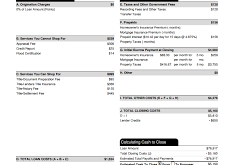Adjustable Rate Mortgage: Everything You Need to Know. An Adjustable Rate Mortgage (ARM) is a type of home loan where the interest rate fluctuates over time based on market conditions. Unlike a fixed-rate mortgage, which has a stable interest rate for the entire loan term, an ARM typically starts with a lower introductory rate for a set period before adjusting periodically.
How Does an Adjustable Rate Mortgage Work?
An ARM consists of two main periods:
- Introductory Fixed Period: The initial phase where the interest rate remains fixed for a specific duration (e.g., 5, 7, or 10 years).
- Adjustment Period: Once the fixed period ends, the rate adjusts periodically (e.g., annually or every six months) based on a financial index plus a margin.
For example, a 5/1 ARM means the interest rate is fixed for five years, then adjusts annually thereafter.
Pros and Cons of an Adjustable Rate Mortgage
Pros
- Lower Initial Interest Rates – Typically lower than fixed-rate mortgages, leading to lower initial monthly payments.
- Greater Borrowing Power – Lower rates mean you may qualify for a larger loan amount.
- Ideal for Short-Term Homeowners – If you plan to move before the rate adjusts, you can save on interest.
- Potential for Lower Rates – If interest rates decrease, your payments could go down.
Cons
- Rate Uncertainty – Payments could increase significantly if market interest rates rise.
- Complexity – ARM terms and adjustments can be difficult to understand.
- Prepayment Penalties – Some ARMs include fees for early loan repayment.
- Potential for Higher Long-Term Costs – Over time, an ARM might become more expensive than a fixed-rate mortgage.
Common Types of Adjustable Rate Mortgages
- 5/1 ARM – Fixed for five years, adjusts annually.
- 7/1 ARM – Fixed for seven years, then adjusts annually.
- 10/1 ARM – Fixed for ten years, then adjusts annually.
- 3/3 ARM – Adjusts every three years.
- 5/5 ARM – Fixed for five years, then adjusts every five years.
Key Terms to Understand
- Index – The financial benchmark (e.g., LIBOR, SOFR, or Treasury index) that determines the adjustable interest rate.
- Margin – The lender’s profit percentage added to the index to determine the new interest rate.
- Rate Cap – Limits on how much the interest rate can increase or decrease.
- Initial Cap – Restricts the first rate adjustment.
- Periodic Cap – Limits rate changes in each adjustment period.
- Lifetime Cap – The maximum rate increase over the loan’s lifespan.
Who Should Consider an Adjustable Rate Mortgage?
An ARM is suitable for:
- Short-term homeowners who plan to sell before the rate adjusts.
- Buyers expecting income growth who can handle future increases.
- Investors looking for lower initial payments to maximize rental profits.
10 Tips for Choosing the Right Adjustable Rate Mortgage
- Understand the loan’s introductory period and adjustment frequency.
- Check interest rate caps to know potential increases.
- Compare index rates used by different lenders.
- Consider refinancing options if rates rise.
- Evaluate your long-term financial stability.
- Read the loan terms carefully, especially margin and adjustment details.
- Compare ARM options with fixed-rate mortgages before deciding.
- Use an ARM calculator to estimate future payments.
- Choose an ARM with a longer fixed period if you need stability.
- Ask about prepayment penalties before signing.
10 Frequently Asked Questions (FAQs)
- How often do ARM rates change?
- It depends on the loan type but usually adjusts annually after the fixed period.
- Can my monthly payments double?
- Not usually, thanks to rate caps, but significant increases are possible.
- Is an ARM better than a fixed-rate mortgage?
- It depends on how long you plan to stay in the home and market conditions.
- What happens if interest rates decrease?
- Your ARM payments could go down, depending on the index.
- Are ARMs risky?
- They can be if rates rise significantly, increasing payments.
- Can I refinance an ARM?
- Yes, refinancing to a fixed-rate loan is an option before rates adjust.
- Are ARMs good for first-time buyers?
- They can be if buyers plan to move before the adjustment period.
- What is the best ARM type?
- It depends on your needs, but 5/1 and 7/1 ARMs are popular choices.
- Do ARMs require larger down payments?
- Not necessarily; down payment requirements depend on the lender.
- How do I qualify for an ARM?
- Lenders evaluate your credit score, income, and financial stability.
Conclusion
An Adjustable Rate Mortgage can be a great option for homebuyers looking for lower initial payments, especially if they plan to move or refinance before the rate adjusts. While ARMs offer flexibility and potential cost savings, they also carry risks due to interest rate fluctuations.
Before choosing an ARM, thoroughly review the terms, compare different loan options, and assess your financial future. Understanding rate caps, adjustment periods, and refinancing possibilities can help you make a smart, informed decision about your home loan.
 mortgage.kbk.news
mortgage.kbk.news
